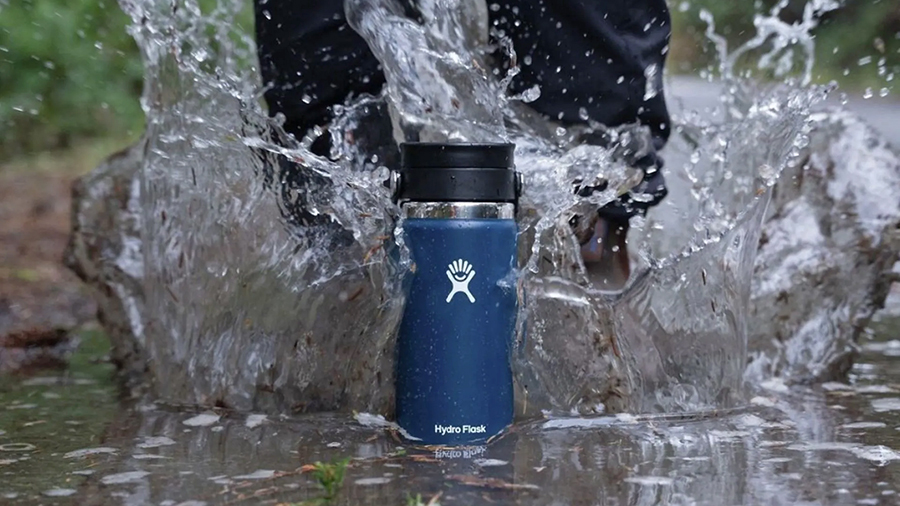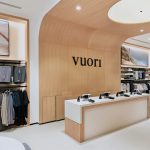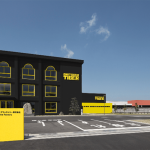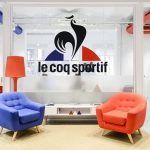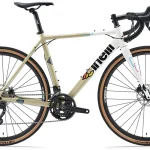Shares of Helen of Troy tumbled about 23 percent Thursday, July 10, after the company reported a loss in the fiscal first quarter ended May 31. Sales declined 10.8 percent and the company issued guidance for the current quarter that was well below analyst targets. Of the sales decline, approximately eight percentage points was attributed to tariffs.
Shares fell $7.04, or 22.7 percent, to close at $23.96 on Thursday, July 10.
“Our Q1 results were well below our expectations,” said interim CEO Brian Grass on analyst call. In early May, Grass, then CFO, replaced CEO Noel Geoffroy on an interim basis less than a year after she took on the role. A search for a permanent replacement is being conducted.
Grass said tariff-related disruption on shipments was greater than originally expected on its last quarter call held in April. Of the 10.8 percent consolidated decline in sales, approximately eight percentage points was related to tariffs.
Grass cited three tariff related impacts. First, the cancellation of direct import orders from China in response to higher tariffs. Second, tariff related pull forward of orders into the fiscal fourth quarter, “leading to elevated inventory and lower replenishment in the current first quarter, which we expect to continue into the second quarter as demand continues to soften.”
Third, China softness driven by a shift from cross border e-commerce to localized distribution models and increased competition from domestic sellers driven by government subsidies.
Grass added that in addition to the tariff-related impacts, Helen of Troy “saw weeks of supply adjustment at certain key retailers as shifting consumer demand curves are being reflected in retailers’ inventory management practices.”
Finally, Grass said Helen of Troy is seeing “clear evidence” of the consumer trading down with average price compression of 3 percent to 4 percent in its U.S. business, which impacted first quarter revenue and profitability. Grass said, “You may have seen other companies recently calling out trade down behavior, including the dollar stores, which are a beneficiary of this trend.”
Home & Outdoor Segment’s Q1 Revenues Slide 10.3 Percent
Sales in the Home & Outdoor segment in the first quarter decreased 10.3 percent to $178.0 million.
“The decrease in Home and Outdoor net sales was primarily driven by tariff-related impacts, which we believe are largely transitory over time, but are expected to persist into the second quarter,” Grass told analysts.
As SGB reported earlier today, Helen of Troy cited the cancellation of direct import orders in response to higher tariffs and retailer pull-forward activity in the fourth quarter of fiscal 2025 due to tariff uncertainty and potential supply disruption resulting in higher retail inventory and lower replenishment. Other factors in the decline cited were softer consumer demand in the home and insulated beverageware categories resulting in lower replenishment orders; lower closeout channel sales; and a net decrease in distribution year-over-year.
These factors were partially offset by strong domestic demand for technical packs that led Osprey to see 3.8 percent growth in the quarter.
“Osprey posted nice growth, benefiting from expanded distribution, category stabilization and robust DTC performance,” said Grass. “While the broader U.S. technical pack market remains challenged, Osprey continues to lead, holding the number one market share three times the size of the next national brand.”
He added that Osprey again gained share in the kid carrier pack category and received two major accolades this quarter as the Scarab 18 was named best hydration pack for hiking, and the Atmos AG 50 won best multiday hiking pack in the Men’s Journal 2025 Outdoor Awards.
Sales within the Home & Outdoor segment also benefited from the favorable comparative impact of shipping disruption at the company’s Tennessee distribution facility due to automation startup issues during the same period last year.
Hydro Flask’s sales in the quarter were down as the brand continues to be impacted by a shift from tumblers back toward traditional water bottles where Hydro Flask hasn’t been historically strong, said Grass.
On the innovation front for Hydro Flask, the MicroHydro, a 6.7-ounce insulated bottle, soft launched via DTC and Whole Foods, has been “an early winner with one of our brick-and-mortar buyers recently saying, ‘I love seeing customers come up to the displays completely smitten with the product on-site.’ Consumers are responding enthusiastically to its functional but fashionable size, so much so we continue to chase demand on our DTC platform,” according to Grass.
Hydro Flask’s International business also grew, driven by expanded distribution in the Asia Pacific region and Canada
OXO, the third brand in the Home & Outdoor segment, gained share but sales were down overall due to broader challenging market conditions. Grass said, “Brand fundamentals remain strong as OXO gained share and extended its leadership in kitchen utensils in the quarter. Our Twist and Stack food storage line launched in January has been highly praised by consumers for quality, versatility, and thoughtful design.”
Home & Outdoor’s operating loss in the period was $213.8 million, compared to operating income of $15.9 million in the year-ago comparative period, with the latest quarter impacted by $219.1 million of pre-tax asset impairment charges and $1.7 million of CEO succession costs. The remaining 400 basis point decrease in segment operating margin was primarily due to the comparative impact of favorable inventory obsolescence expense in the prior year, a less favorable brand mix, consumer trade-down behavior, higher outbound freight costs, higher marketing expense, higher retail trade expense, and the impact of unfavorable operating leverage. These factors were partially offset by lower commodity and product costs. Adjusted operating income decreased 57.9 percent to $8.9 million, or 5.0 percent of segment net sales revenue, compared to $21.1 million, or 10.6 percent.
Consolidated First-Quarter Results
In the quarter, consolidated sales fell $45.2 million to $371.7 million, missing Wall Street’s consensus target of $400.4 million. The decline was driven by a decrease from Organic business of 17.0 percent due decline in Beauty & Wellness segment primarily driven by lower sales of thermometers, fans, and hair appliances as well as a decline in Home & Outdoor segment, primarily resulting from a decrease in home and insulated beverageware sales.
The Organic business decline was partially offset by the contribution from the December-2024 acquisition of Olive & June of $26.8 million, or 6.4 percent, to consolidated net sales revenue and strong domestic demand for Osprey technical packs in Home & Outdoor.
Gross margins in the quarter decreased 160 basis points to 47.1 percent primarily due to the comparative impact of favorable inventory obsolescence expense in the prior year, consumer trade-down behavior, higher retail trade expense and a less favorable brand mix within Home & Outdoor. These factors were partially offset by the favorable impact of the acquisition of Olive & June within Beauty & Wellness and lower commodity and product costs, partly driven by Project Pegasus restructuring initiatives.
SG&A expenses increased 420 basis points as a percent of sales to 45.1 percent primarily due to higher marketing expense, higher outbound freight costs, CEO succession costs of $3.5 million, the impact of the Olive & June acquisition and the impact of unfavorable operating leverage due to the decrease in net sales.
The quarter included non-cash asset impairment charges of $414.4 million ($436.2 million after tax) impacting both the Beauty & Wellness and Home & Outdoor segments, to reduce goodwill by $317.0 million and other intangible assets by $97.4 million.
With the charges, the net loss in the latest quarter was $450.7 million, or $19.65 a share, compared to net income of $6.2 million, or 26 cents a share ago. On an adjusted basis, earnings fell 59.4 percent to $9.5 million, or 41 cents a share, from $9.5 million, or 99 cents, a year ago and well short of analysts’ consensus estimate of 93 cents.
Beauty & Wellness Q1 Results
Beauty & Wellness operating loss was $193.2 million compared to operating income of $14.9 million a year ago. Operating loss in the first quarter of fiscal 2026 included $195.3 million of pre-tax impairment charges and $1.7 million of CEO succession costs. Adjusted operating income decreased 66.8 percent to $7.3 million, or 3.7 percent of segment sales, compared to $21.9 million, or 10.0 percent of segment sales. The segment includes Vicks, Braun, Honeywell, PUR, Hot Tools, Drybar, Curlsmith, Revlon and Olive & June.
Second-Quarter Outlook
Helen of Troy expects consolidated net sales revenue in the current second quarter in the range of $408 million to $432 million, which implies a decline of 14.0 percent to 8.9 percent, year over year. Analysts’ consensus target had been $475.1 million. Home & Outdoor sales are expected to decline in the range of 16.5 percent to 11.5 percent while Beauty & Wellness sales are projected decline in the range of 11.3 percent to 6.1 percent year over year.
Earnings on an adjusted basis are expected in the range of 45 cents to 60 cents, below analysts’ consensus target of $1.16.
Tracy Schuerman, interim CFO, said, “Our adjusted EPS outlook includes expected margin compression due to the impact of the more promotional environment, consumer trade down behavior, less favorable mix, higher direct tariff-related costs and unfavorable operating leverage, partially offset by lower commodity and product costs driven by our Project Pegasus initiative.”
She said that in response to unfavorable operating leverage, Helen of Troy is taking steps to reduce costs and expects to normalize SG&A ratio to approximately 37 percent to 38 percent for the remaining three quarters of the fiscal year. Schuerman said, “We anticipate a more pronounced improvement in the second half, supported by our seasonal revenue patterns, easing tariff to trade disruptions and the impact of our price increases to retail on our SG&A ratio.”
Tariff Update
To mitigate the company’s risk of ongoing exposure to tariffs, Helen of Troy said it has initiated significant efforts to diversify its production outside of China into regions where it expects tariffs or overall costs to be lower and to source the same product in more than one region, to the extent it is possible and not cost-prohibitive. The company now expects to reduce its cost of goods sold exposed to China tariffs to less than 25 percent by the end of fiscal 2026. Schuerman said its estimated end exposure increased from 20 percent to 25 percent since the company’s last earnings call, primarily due to updated timing for the Southeast Asia transition and revisions to its inventory strategy, which was originally developed under the assumption of a 145 percent tariff.
Other mitigation actions, which include cost reductions from suppliers and price increases to customers on products subject to tariffs, are also being pursued.
“With tariff now at 30 percent and pricing actions underway, retailers remain focused on in-line goods to avoid shelf disruptions, prompting a corresponding change in our sourcing approach,” said Schuerman. “Looking ahead to fiscal 2027, we expect continued progress to further reduce our exposure to China tariffs on U.S. imports to approximately 15 percent. In parallel, we continue to expect that over 40 percent of our U.S. down purchases sourced in China will be dual sourced and available from other regions by the end of fiscal 2026, increasing to over 60 percent by the end of fiscal 2027, positioning us to offer with greater control, flexibility and an increasingly dynamic global environment.”
Image courtesy Hydro Flask

